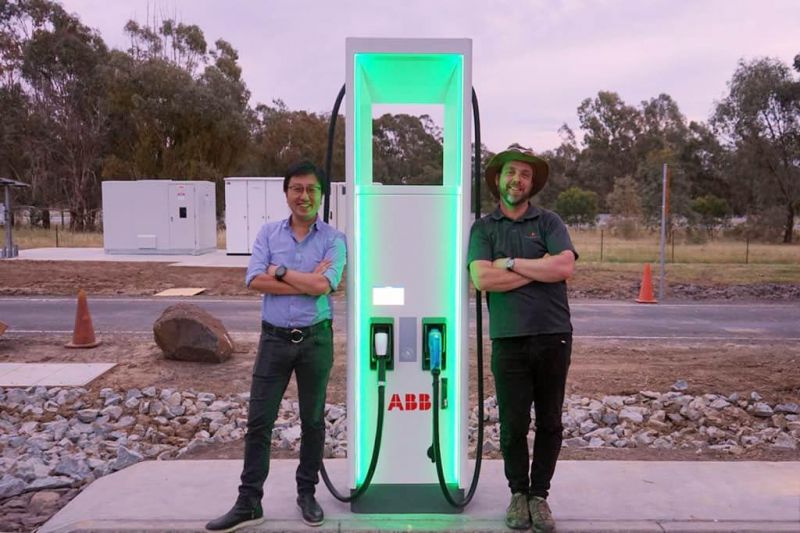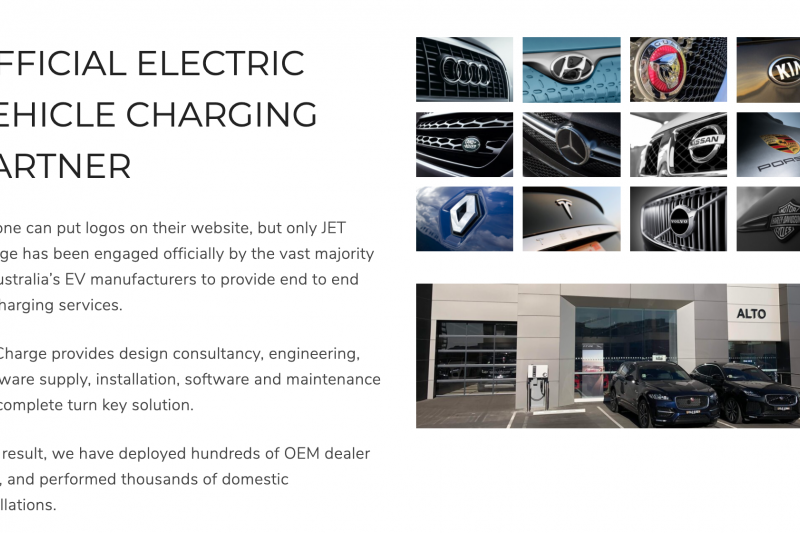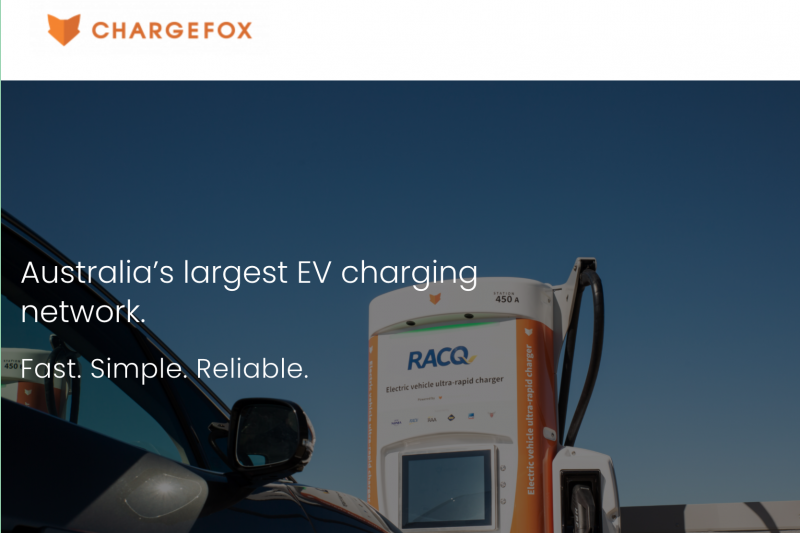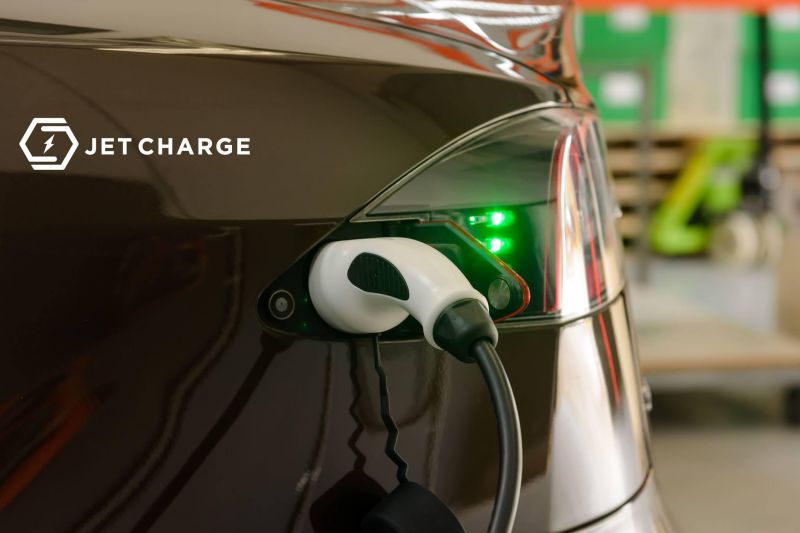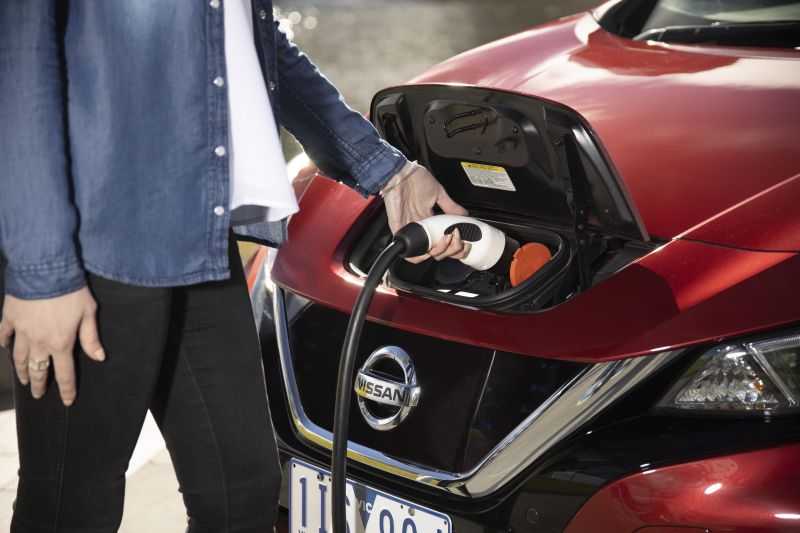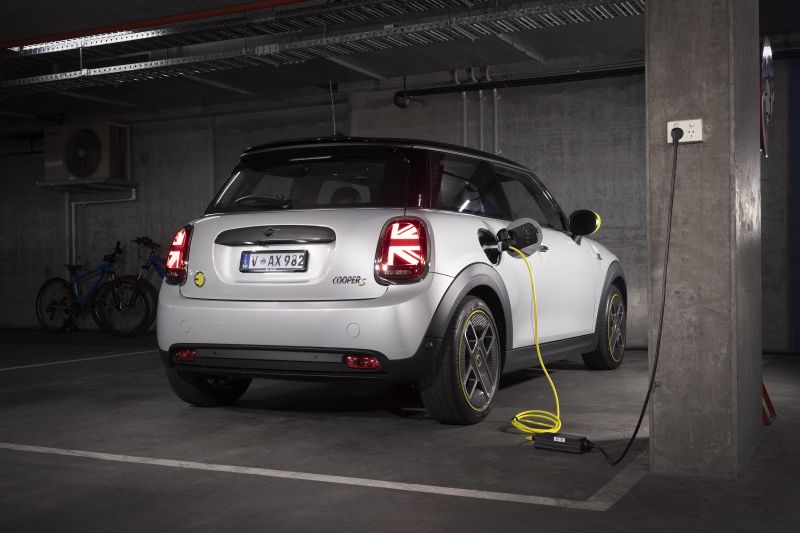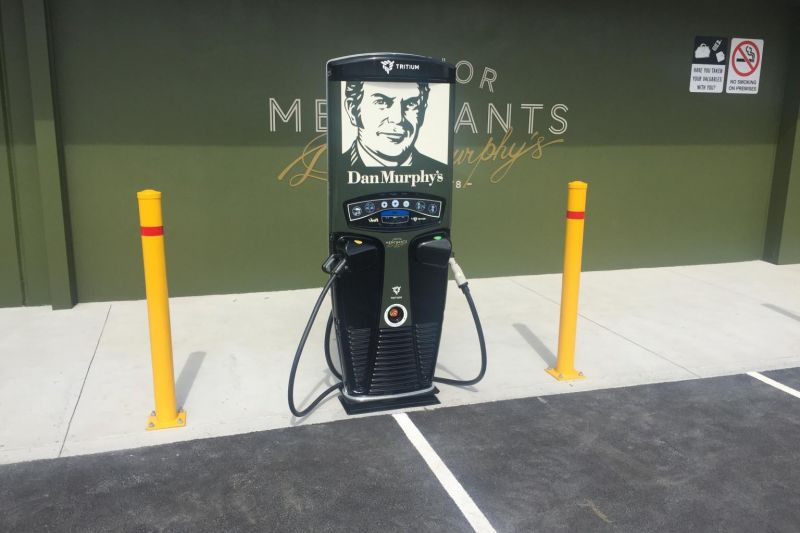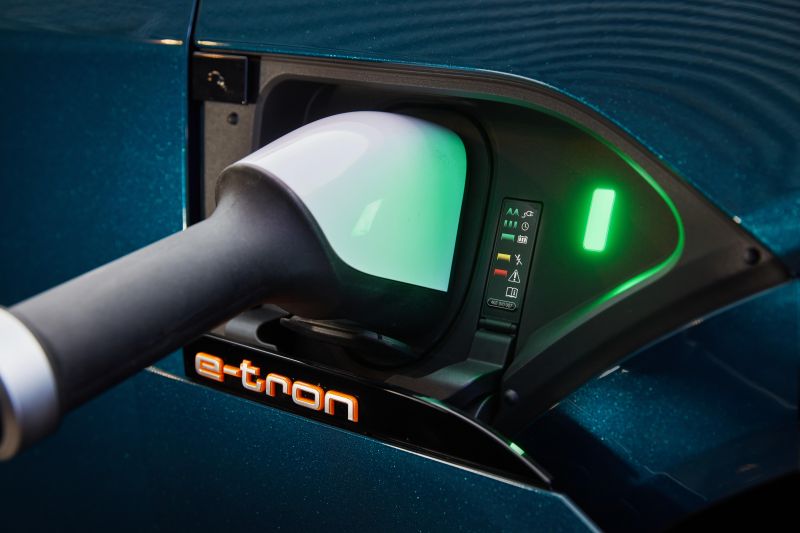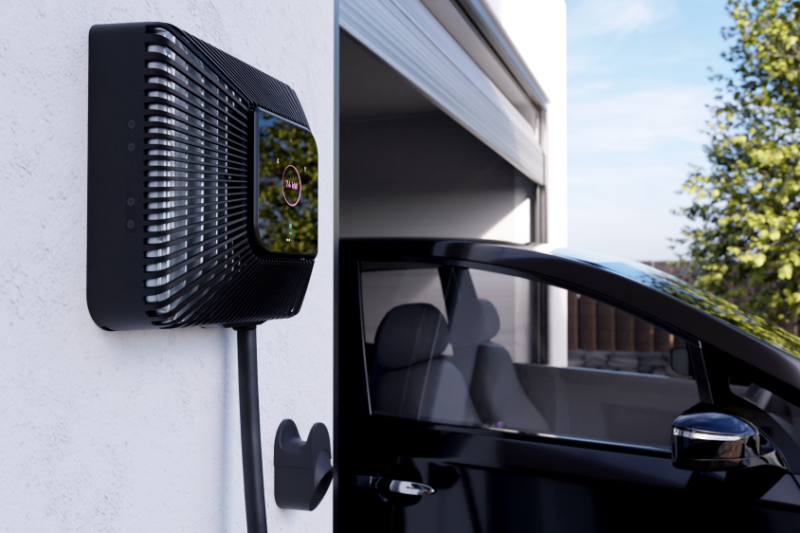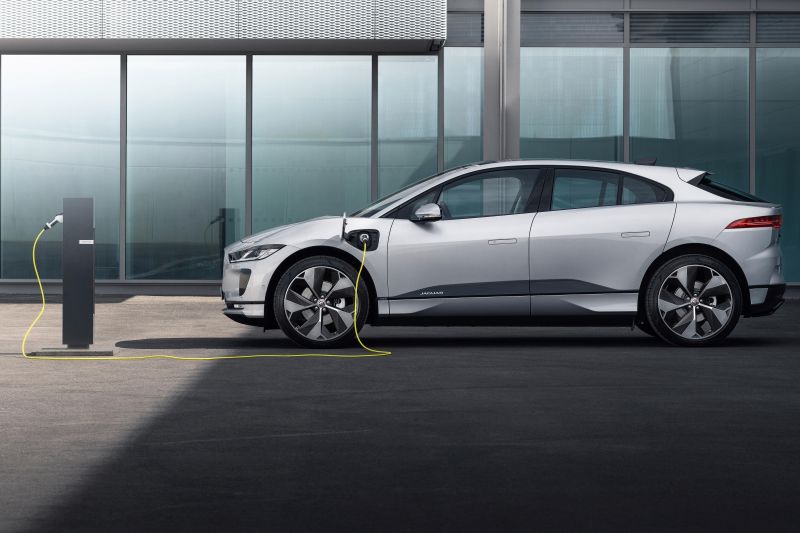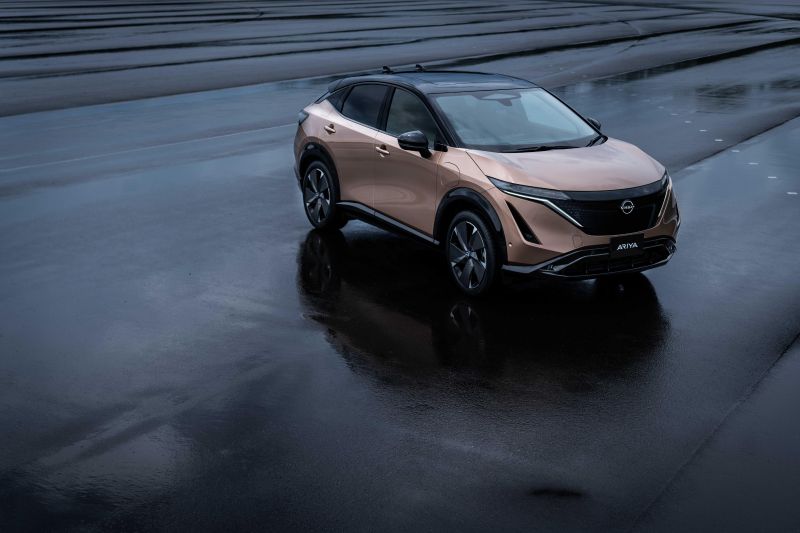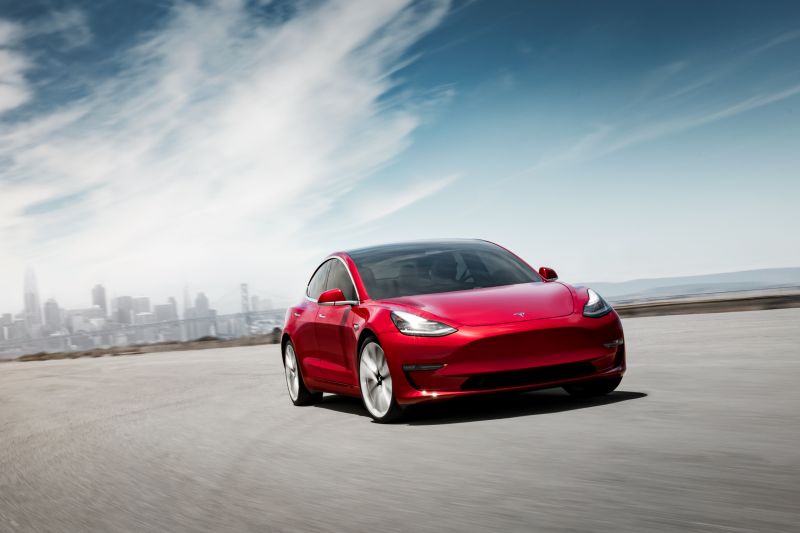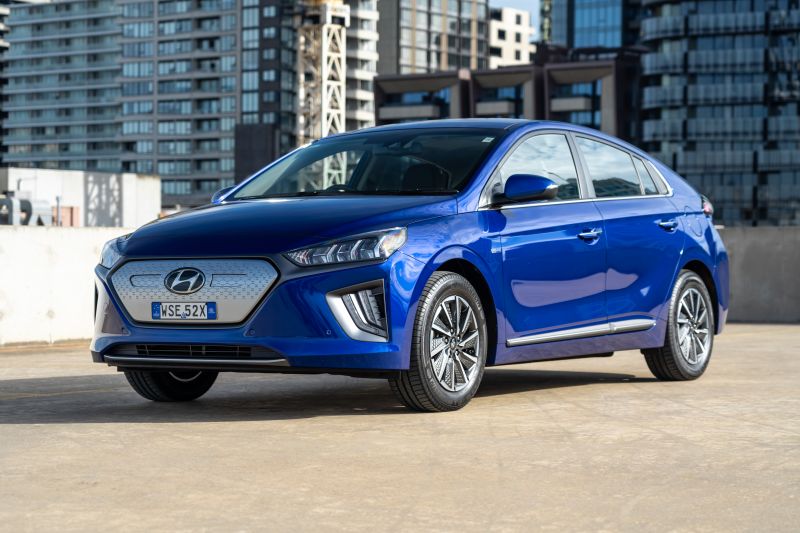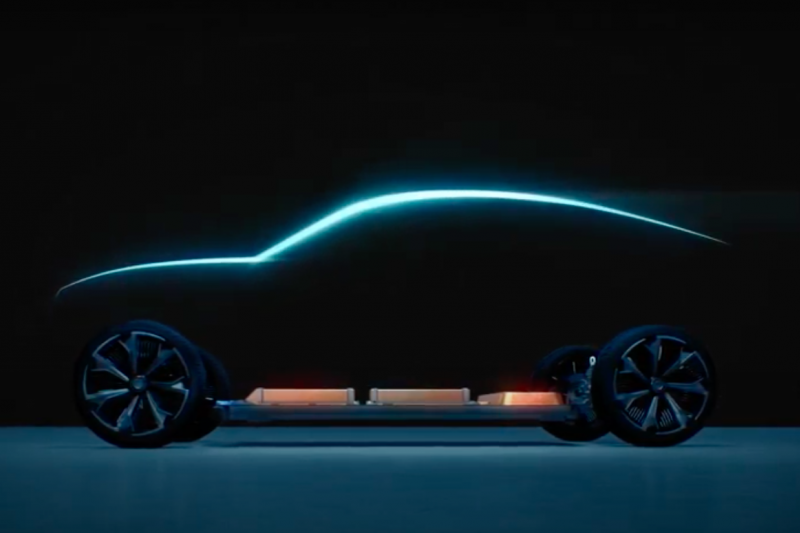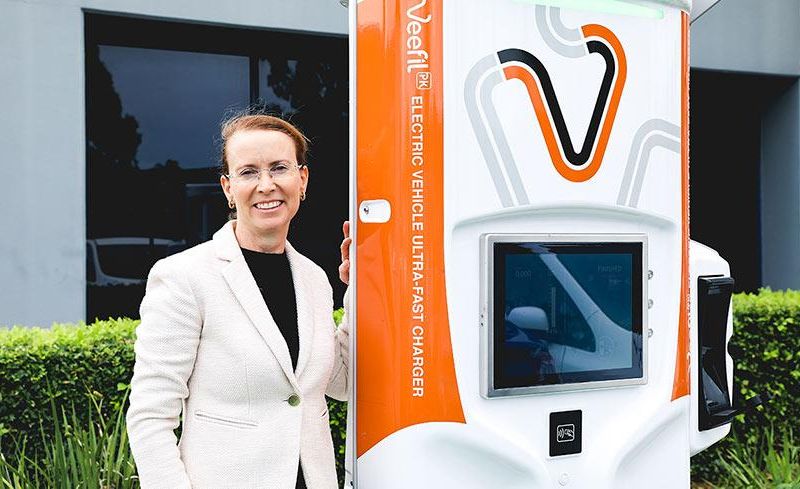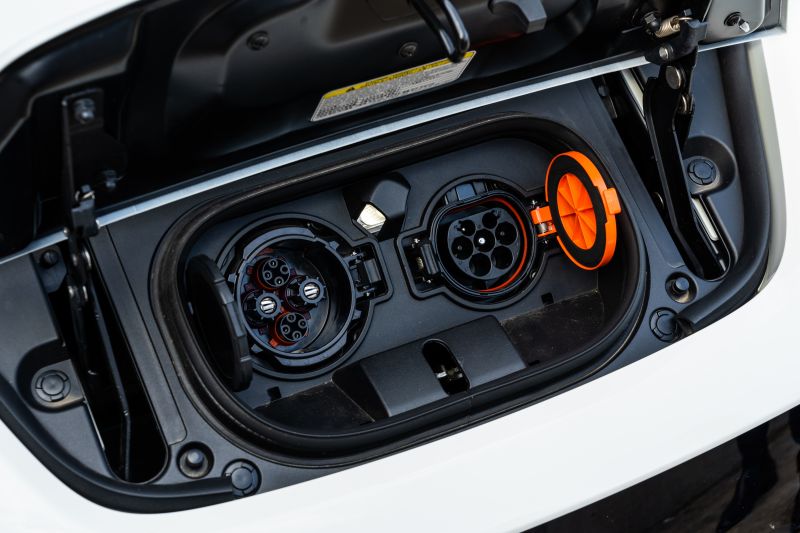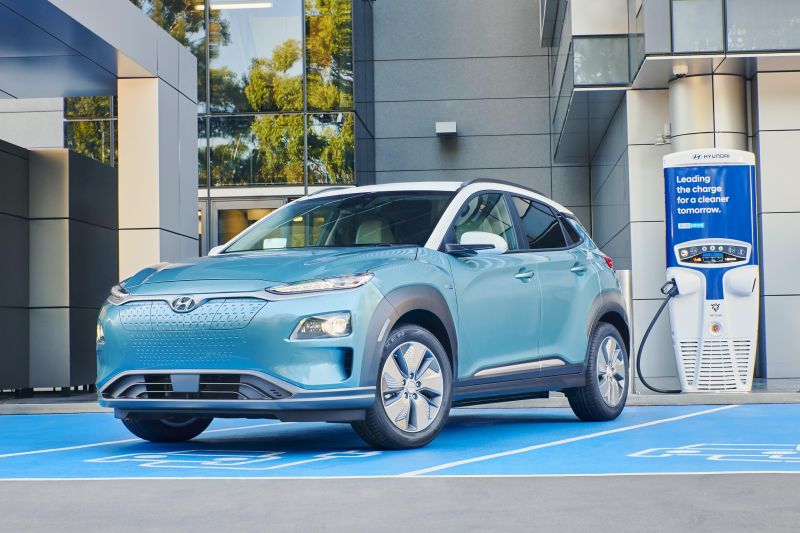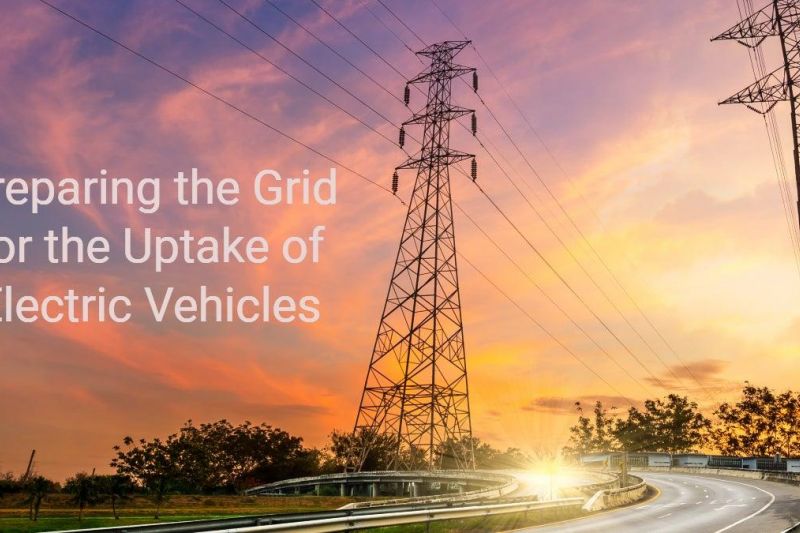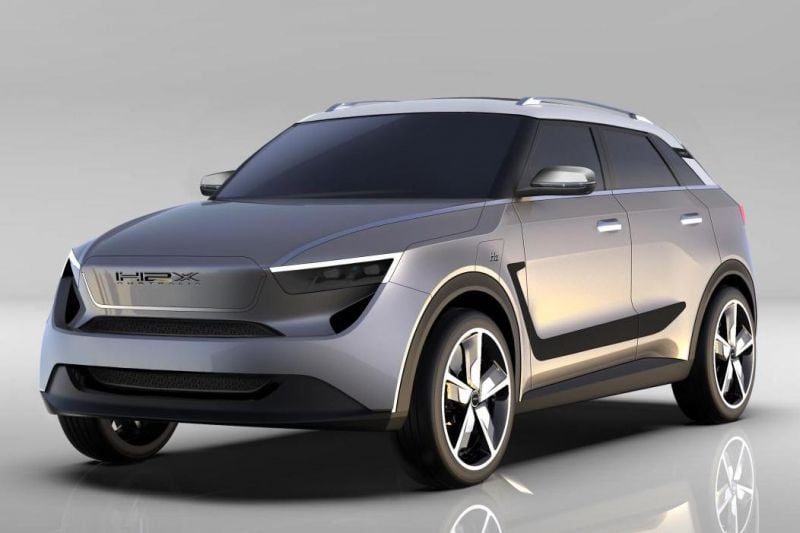Tim Washington is the founder of electric vehicle infrastructure provider JET Charge, co-founder of software and charging-platform manager Chargefox, and the chair of the Electric Vehicle Council lobby group.
The two companies mentioned install and support (though an app in part) public and private, AC and DC electric vehicle chargers across Australia, are helping explore bi-directional charging in its infancy, and serve as the nominated supplier and charging ‘partner’ to the majority of brands selling EVs here.
In short, a significant percentage of public EV chargers and private wall boxes in Australia were installed and managed by a company led by Washington, while the main central EV advisory group is chaired by him.
Here we talk about the state of play in the EV market locally, and where things might head.
CarExpert: Tell us about JET Charge
Tim Washington: It was incorporated in 2014. I started out as basically wanting to provide specialist installation services for Tesla customers in Melbourne. That was the goal.
I finished up at the family business and wanted to do something with technology. My partner Ellen said ‘if I’m going to be supporting you to go on this wild goose chase, then you need to do something of good, something that contributes [to society]’.
So we decided to look at EVs, at car-charging infrastructure. I said to myself, ‘you know what, there are two things to this’.
If you can ‘fuel’ at home that changes everything, because it kind of decentralises fueling completely, and there has to be something in that. I didn’t know what it was at the time, but I knew there had to be something in that.
And the second thing was, if someone’s bought a $250,000 Tesla, they’re not going to want the guy who installed their Foxtel come in and install their Tesla charger.
That was my thesis back then. We focused on the vehicle manufacturers because we knew they were the ones who are going to be selling the cars. They’re the ones who need to know about charging. And so we focused on the vehicle manufacturers.
JET Charge is now, fast forward seven years, the charging partner behind the scenes for the vast majority of the OEMs in Australia. We’re the largest in the country. We’ve got 40 people doing all kinds of things.
Really our goal is to take EV charging out of the equation as an excuse to not buy an electric car.
CE: Your most obvious touchpoint with the public would be the fact that the majority of the OEMs selling electric vehicles now have partnerships with you to offer their home charging wall boxes and things like that?
TW: Yeah, that’s right. And that’s because they’ve never had to do this work. We’re the bridge between the automotive and electrical worlds, they’ve never had to think about offering home installation services, that’s not their core. So they contract us to do that.
CE: And Chargefox?
TW: It was really born out of a conversation I had back in 2016. At that stage JET Charge was at a point where I needed a software platform to essentially control the charging stations.
I was getting to the realisation very quickly that the software component was extremely important for billing and engagement and measuring and all that stuff.
So I tried to bring three different software providers into the market. And it didn’t work, because Australia’s volumes are so little compared to overseas, nobody wanted to change anything to localise the software.
And so just at that time, a couple of guys that I knew from a company called Cogent, a software developer, approached me through a mutual acquaintance and said, ‘we’re looking to do some work on sustainable transport, what do you think the trends are?’
And instead, I just kind of pitched them on this idea of creating something together. I said, ‘you guys want to pitch in some money, you’ve got the software expertise, I have neither of those things, but I do know EVs, and I do know what the market needs’.
The Chargefox network is broken up into two parts. The first is what people think of as the ultra-rapid network, which is the big stuff.
But actually there are around 1400 plugs that people don’t talk as much about, around 300 public-facing charging stations as well as a lot of private charging stations for fleets and apartments and homes.
The ultra-rapid network came out of a conversation I had with the government back in 2016. I was asked the question, ‘what is the biggest barrier to EV adoption in Australia?’
And I said, all the normal things: price, model availability and stuff. But really the biggest thing that I think from our industry is that we need high-power charging.
And they asked how much it would cost, I gave them a number, and they said ‘why haven’t you done it yet? That doesn’t seem like a lot of money’. So I asked if I were to bring them a business case, would they fund it?
They didn’t fund it (laughs), that particular arm of the government, but we ended up raising money through the motoring clubs put together, as well as from ARENA [federal government fund] and the Victorian government as well.
We were setting out to basically get over the first question that people ask, which is ‘can I drive from Melbourne to Sydney?’ And we needed the dealer to be able to say ‘yes’. A lot of these sales start and end at the dealer. If salespeople find it difficult to answer charging questions, they are less likely to sell EVs.
People talk about low dealer engagement in relation to EVs. I actually think that’s not quite true. I actually think dealers know how to sell EVs because quite frankly, they are easy to sell, apart from the price, which is obviously hard.
The actual car experience, I think is easy to sell. It’s the charging stuff. There are too many barriers, and we were aiming to eliminate one of those.
So the 22 ultra-rapid charging sites we‘re making means that you’ll be able to drive from Adelaide to Brisbane by the time we’re finished – and we’ll be finished very soon despite COVID and bushfires.
But the Charge Fox network is really a reflection of what fueling is going to become in the future. It is not about creating only public charging. Because public charging gets the most attention, but it’s also where people charge the least.
Most charging happens at home or at work, you need an ecosystem that ties all of that together. So companies who only focus on public charging are missing 90 per cent of the puzzle.
So when we came in with Chargefox, we said it has to be a holistic, all-encompassing solution and that people had touchpoints with their charging providers, no matter where they were charging.
We’re the largest charging network now in Australia, we’re proud that we have grown, and we think of ourselves as part of the automotive landscape.
CE: The third main role you have is chair of the EV Council, which acts as an advisory group and seeks to pull together companies involved in EVs under one advocacy body.
Can you talk about that a bit? And how does this cohabitate with the existing Federal Chamber of Automotive Industries (FCAI)?
TW: We call the Electric Vehicle Council the peak industry body for the electric vehicle industry.
And I think the electric vehicle ‘industry’ is the key term there. It is a recognition that as we move towards low-emissions transport, that the industry is a lot more than just cars. It is a completely different ecosystem.
So cars obviously have a lot of auto members with us, but it is their interaction with the wider ecosystem. We have a lot of electricity utilities, charging providers, property players. It is recognition that we represent the industry as a whole and not just car companies, even though they’re a big part of what we do.
We do cohabitate with the FCAI, and I think we play a slightly different role. I think we have the luxury of being able to focus purely on what’s next, essentially, and have a very focused story of what we’re trying to achieve.
And certainly when our auto members come into our meetings, it is all about how their EV portfolio can succeed and how we can help them succeed. So messaging is always straight up and focused and governments tend to like that.
But really, we say our main role is education. Mike, you’ve been doing this for a long time, if you rewind maybe eight years, maybe when you saw your first EV, do you feel like you’re answering the same questions now as you were answering back then?
It is a recognition, I think, of just how long it takes for a once-in-several generation change to occur before it really enters that ‘hockey stick’ phase. Once everybody’s on board, then we’re right to go, but the amount of repetition and education that you need, before that curve, is immense. That’s our primary role – education.
CE: One thing that really interested me recently was Ampol’s decision to roll out chargers at its service stations.
You go to Europe, as you well know, and every major roadside service station has a bank of DC chargers out the back.
Is that a key part of the rollout of infrastructure as far as you see it?
TW: There are actually two parts to that. The first is ‘will oil companies be involved as a whole?’, and the answer is definitely, absolutely.
The three major industries that are going to get involved in the infrastructure side are oil companies, electricity companies and the vehicle manufacturers themselves. As well as government, but governments normally just co-invest.
Oil companies as a whole such as Shell have been acquiring EV charging infrastructure businesses, and they will have a role to play, they will have a major role to play. Because at the end of the day they’re supplying energy
Yes, a lot of the infrastructure is built around fossil fuels. But they’re business-people, it’s not like they go to sleep with a barrel of oil in their bed, right? They think about ‘what’s the next big thing, what’s going to help that business grow? How do I satisfy my shareholders?
The second part of that question is, what is the relationship between their overall involvement and putting in charging stations in existing petrol stations? And I think the answer to that is probably a bit more nuanced.
It is part of the puzzle but not as big as people think. Because unlike petrol, which is a centralised version of fueling, EV charging is very much decentralised. Anywhere there’s electricity, you can charge your car.
And the fundamental fact that you’re not with your car when you’re charging, means that the balance of power shifts between those who can install fuel pumps and those who have car parks.
If you think about the biggest petrol station you can think of in Australia, in the actual forecourt area, they’d be lucky to have 10 car spaces that are reserved for people to the shops and stuff like that.
You think about your smallest Woolies or Coles, they’ve got hundreds of car spaces.
And so if people don’t stay with a car, and they’re going and doing something and they’re charging, well then it’s all about who has the most car parks, how many cars can charge at once. So we’ve done a lot of charging in shopping centres, for example.
CE: But public charging isn’t the major factor. The bigger factor here is home charging. And there are a number of impediments to that.
Your Mercedes EQC owner with a nice big house and a double garage can have a three-phase AC charger set up. But say you live in an apartment?
Can you touch on some of the impediments and hurdles that you’re currently seeing in the rollout of private home charging?
And what are some things that the building code writers and regulators can do to actually hasten the rollout of private at home chargers?
TW: The biggest impediment to home charging comes if you don’t have off-street parking. If you have off-street parking, and that includes apartments, you will be able to charge your car.
If you have to park in the street, you shouldn’t drag an extension cord across the pavement to charge your car. And so once you park on the street, then it’s about local governments and state governments getting involved to figure out how we service those people.
That is a conversation I am having with a lot of councils about how we provide that service.
Long term, it’s going to be a combination of ultra-fast urban charging, kind of like petrol stations, but in an urban environment where people go once a week, and streetside charging, for example on lamp posts.
The good thing about AC charging is it actually fits into a lot of stuff. So, one cool example is that we recently rolled out our first parking-meter charging station in Sydney. The parking meter is facing the building and then there’s two ports at the back.
Home charging though, almost everybody can install the charger. In an apartment, it’s purely about whether the owners corporation allows it. And I’ll be frank with you. There are lots of people in owners corporations who don’t want to do things, just because.
And that is the biggest impediment we’ve had in apartments. It is not technology. It is not the ability to do it. It is purely because you have to go through so many hurdles with your owners corporation that a lot of people don’t find it worth it.
We had a customer in the ACT who actually took the owners corp to the Administrative Tribunal to get it through.
And I think we should adopt basically similar laws that they’ve adopted in, for example, California, where the de facto rule is that you can install a charging station. And the owners corporation has to provide a very good reason for you to not install.
CE: I imagined one of the fears people have is ‘am I going to be paying for someone else to charge their car?’ But with the right software management, that doesn’t need to be an issue.
TW: It’s not an issue. There are already technical solutions to that. And it’s being rolled out every day. People are becoming more accepting.
What’s really interesting, we’re still going through a building boom, especially here in Melbourne. And every new building has EV charging in it, or a provision for EV charging.
CE: Is that right? Because that was my next question. It’s an obvious value-add, to talk to developers when it’s still a planning stage is to integrate that…
TW: Every single project pretty much now has EV charging provisioned for, or installed, from day one. It started out with just one [point]. Now it’s like 10, recently we did 56.
CE: And so that’s developers seeing the benefit, rather than the government taking a stick to them and making them?
TW: That is correct. Admittedly, you’ll see more charging stations in higher-end developments. And that is a recognition that the luxury car segment is tending more and more electric, because people are less price sensitive, and just want the coolest new toy.
But even in the more mass-market stuff now we’re starting to see visitor-space charging, all of that.
It’s created quite an interesting environment because we have an oversupply of apartment housing essentially, there’s a lot of apartments out there.
If a new building goes up next to you and you want to buy a Tesla Model 3 or you want to buy a Hyundai ioniq, and your building’s not letting you install one. but there’s a building next door that has gone up that has one ready, you’re probably thinking about moving.
People are often less tied to their apartments now than to their cars. People love their cars, especially EVs. They love their cars, and they’ll move. And so it actually started to create a competitive environment.
And people are starting to give the reason they’re leaving as ‘they [building managers] weren’t letting me install a charger’.
That’s going to happen more and more. There are no kind of objective studies on the preservation of value for apartments with EV chargers, but that will come over time.
And certainly, other reports about buildings that have high energy efficiency ratings, or buildings that have high green star ratings, say they tend to have high values. So if historical precedent is of any note, then I think EV charging will go the same way.
And my honest belief, and this is kind of the advice that we’re giving to developers right now, is that you need to imagine a world where every single person in your apartment drives an EV, because your building is going to be there for 50-60 years.
And I never walk into boardrooms these days and have people say to me EVs are not going to be a thing. It is ‘Tim, do you think it’ll be a 2025 thing or do you think it’ll be 2030?’
And I basically say to them, you know, even if it’s a 2040 thing, it’s still 30 years left in your building to go. And if you don’t make provision from day one, then you’re going to be at a disadvantage. So it’s a different dynamic now and people get it.
CE: Will Australia ever offer Europe-style, Japan- and China-style, California-style grants, subsidies, tax cuts, etc to incentivise the rollout of EVs?
TW: I would say from an industry perspective, it is something that we push for.
Any OEM that you speak with will tell you that they make less money from electric vehicles than they do from internal combustion engine vehicles.
But it’s not to help with that, really, but to deliver on the policy outcomes that we’re all looking for, whether it be air quality, low emissions, low running costs, whatever. Countries are not giving subsidies to EVs because, you know, they’re just Elon fans, right?
Germany, for example, builds a lot of internal combustion engine industry globally, but still has heavy EV subsidies. Why? Because they see the policy outcomes as the future of their industry.
And even countries that don’t have homegrown car manufacturing, they’re still supporting it because they see it achieve certain policy outcomes.
And as part of the EV Council, our goal is simply to help educate the politicians to say, this is why we’re advocating for it. We’re not advocating for it to subsidise rich people to drive Teslas.
… If you look at a Hyundai Ioniq, for example, we can bring that price down enough for a fleet to purchase. So there are State governments who are going, ‘how do we bridge the gap for fleets between electric and petrol?’
Certainly, there’s nothing kind of on the radar right now, at a federal level. But I think we can get there if we can show them the policy outcomes that we can achieve with it. I think we can get there. We’re hopeful.
CE: A devil’s advocate would say that international economies of scale will drive the cost of batteries down, and the market will make them affordable because of that within X amount of years anyway.
So we could save our public dollars and put them into health, schools and other things.
TW: That is often used as an excuse for why we don’t want to do something. But the reality is that the government intervenes in markets all the time to achieve policy outcomes faster than other countries.
This is a once-in-several-generation shift. It doesn’t come along very often. I think people need to be more ambitious for us as a country where we say ‘you know what, we’re going to create something out of this, we don’t have local manufacturing anymore, but that doesn’t mean we can’t have an automotive sector’.
Vehicle affordability is one thing. But I think creating an industry is a separate consideration. And, you know, if you look globally, the countries that have the best EV startups are those countries that support electric vehicle uptake.
It’s not so much about whether we will have affordable EVs sometime in the future. The question is, what do we lose by waiting? There is a cost of not doing something.
CE: There’s another benefit to grants. If EVs are more affordable, they’re more popular, and then more OEMs will actually send them here.
Right now, the breadth of choice isn’t great. There are so many EVs sold in other markets that do not come here because demand isn’t seen as sufficient.
TW: Yeah, absolutely. How many people actually know what the local car brands need to do to justify bringing vehicles here? Each region needs to put together a business case, right?
And that business case includes everything: government subsidy, charging infrastructure, how many they think they can sell.
The reality is EVs are in demand globally. And so in the global head office, they’ll say ‘we have to send some here to make vehicle emission standards, we have to send some there because 5% of sales need to be EV, and then they’ll think, what about Australia?
Well, we’ve got no government policy, infrastructure is growing, but nowhere near other countries. Why would they send [their EVs] there, it seems too hard a sell.
So one job is to make the lives of OEMs easier, so they can make these business cases easier.
CE: You mentioned the goal of creating an EV industry.
I interviewed Jane Hunter from Brisbane-based, global DC-charging leader Tritium recently, and she said that Australia in terms of R&D was great at the ‘R’ and often not as good at the ‘D’, which I thought was quite astute.
We’ve obviously seen a number of other electric-focused startups happening almost despite a lack of support. Do you agree with Jane’s assessment on that? Do you think Australia can be a bit of an EV hub?
TW: The first thing I would say about companies like Tritium, is that it shows that companies can grow despite an environment that doesn’t support them.
I think research is good because a lot of it happens out of universities and the CSIRO. But development is hard because you’ve got an environment that doesn’t support it. Right?
Any company that’s starting looks to their own home market first for demand. And when the demand isn’t there, well, either they don’t do it, or they go overseas.
And so the first thing is we need to give startups the confidence that if they do decide to go down this road, instead of becoming the next mattress company, they want to go into renewable energy… that there is a hungry market that will support them.
Right now, the hungry market doesn’t exist, really. And we need to be better at that.
In terms of can we become an EV hub? My personal view is that if a government focuses on something, if they actually create an environment in which an EV sector can succeed, of course we can.
We’ve got the lithium here, we’ve got heaps of solar renewable energy, we’re very educated. We’ve actually got a very good opportunity in Australia to show the world how to integrate electric cars at scale into the grid. Because we have one of the most complicated grids in the world.
We have really high penetration of renewable energy, and a really high uptake of rooftop solar per capita, and an increasing uptake of battery storage. All of those things working together, seeing how electric vehicles feed in, requires a tremendous amount of technology and development. And we’re uniquely placed to show people how to do it.
CE: I’m glad that you’ve sort of just touched on the vehicle-to-grid stuff. Clearly, that’s the latest development.
Obviously, the timing of this is particularly propitious, because of the announcement around the V2G trial using Nissans, supported by ARENA and JET Charge, and your plans to offer a bi-directional charging unit to the public.
This is an angle on EV ownership that I think is often overlooked. I look at my mother who lives in regional Victoria, and who has rolling power blackouts every other month.
The ability to use an electric car as a power generator, and to yield cost savings by actually selling power back into the grid, makes endless sense. An EV battery could power a house for a week if the proverbial hits the fan.
What is this vehicle-to-grid trial that is happening at the moment?
TW: So right now people think about charging the vehicle. Bi-directional charging basically means you can pull electricity out of the car.
… The idea is that vehicles are traditionally viewed as extremely inefficient assets, right, because they parked 90 per cent of the time. And it’s one of the key reasons why people say we should move towards more rideshare, we should move towards shared transport.
What bi-directional charging does is it turns one of your life’s most inefficient assets into one of your most efficient assets, because it’s always doing something. ‘
So in this particular trial, in the ACT, what we’re doing is we’re saying the government’s going to drive around 50 EVs as part of their normal fleet.
They don’t change their behavior in the slightest – in fact, a really important part of this trial is to demonstrate that the vehicle-to-grid component fits in with normal operations – so we don’t have any restrictions on how they use the vehicles.
But when they return back to base, they plug it in. And when it is plugged in, we report that back to a central system. And the central system tells the grid operator that we have these resources available if something happens on the grid.
So for the first time what we’re doing is, we’re saying if the vehicle’s not being driven, and it’s just sitting there, why can’t we use the vehicles for that [grid stabilisation]?
These vehicles are aggregated along with other things that do similar functions that support the grid. And then we’re constantly letting the market regulator know that ‘this is available for you’.
And the way that this trial works is that the vehicles get paid to be back-up. So you’re not paid so much if you pump electricity back into the grid, you get paid for being the backup.
And then once you’re called upon if something happens, which is not very often, but if something does happen, you’re called upon to pump electricity back in.
And so the really interesting part about this is that the government hasn’t had to pay for that resource in terms of the capital costs. The government purchased these cars because they need cars, they need fleets.
Australia has something like 14 million cars. If all of those were electric then we would have many times the snowy hydro scheme available as a grouped reserve.
Australia has something like 1.8 cars per household, which means that a lot of people have two cars and a second car is literally used to go to the shops and to drop the kids off to school, right?
If you have a second car that’s electric, essentially, then you can store electricity and you can power your house with it. And it becomes an asset that you want to own. Right. And it will, I honestly believe that it will displace residential home storage.
CE: This is the big issue, isn’t it? Because people talk about solar etc, but unless you’re using that on-demand, it just dissipates because you can’t store that energy.
But this is a game changer because you’re storing generated energy in your car, either to use it for driving, to put into the grid for cash, or to simply ween off the grid.
TW: Really, ultimately, I’m just excited that people get to choose how they consume and distribute electricity.
And they get to do it in an asset that they would have purchased anyway. It’s not something that they had to go out and purchase. It’s something that they purchased anyway.
And within five years, all electric vehicle vehicles will be capable of this.
CE: The final one for tonight is just a quick pivot. There’s been a fair bit of development in the hydrogen fuel-cell EV space, with Australian government support and startups such as H2X.
I certainly feel that FCEV units are particularly suitable for big vehicles, buses and trucks because of payload and rapid refill times and things of that nature, and using scalable electrolysers installed on site to mitigate transport emissions.
But there seems to be this very strange almost war of words or battle line between BEV and FCEV advocates. Do you see the need for this kind of rivalry? Or is there a place for both? They’ve sort of got a common enemy, as it were.
TW: It’s bizarre, and I think it’s just a sign of tribalism at times, people feel like they have to belong to a camp.
I’ve got my own kind of views as to which one’s technologically superior, which one’s going to be cheaper, which one’s going to win out. But if you can build a business case, and you can get funding and you can do all of that with hydrogen, good for you, go for it.
My honest view is that I think in a heavy transport space, the long haul space, I think electric vehicles have something to prove still.
I think the hydrogen needs to be made from renewable sources. Just like people say electricity should be made from renewable sources, which, of course I agree with, hydrogen needs to be the same.
And I also think that if you compare the cost of infrastructure, it’s obviously a lot cheaper to go electric.
But no, there is no need for war of words. And in fact, at an industry level, there is no world war of words. I think it gets a lot of attention because you know, Tesla and Nikola are going out, kind of globally, but we think Australia is no animosity really at an industry level.
Interested in reading more of our Industry Q&As? Check out the full set here.

